Nevada’s State Portrait of a Learner
Key Points
-
Nevada’s approach emphasizes competency-based learning and community-driven education, ensuring students are equipped with essential life skills.
-
Collaboration with local and national partners is crucial to the successful implementation of the Portrait of a Learner, fostering a sustainable and inclusive educational system.
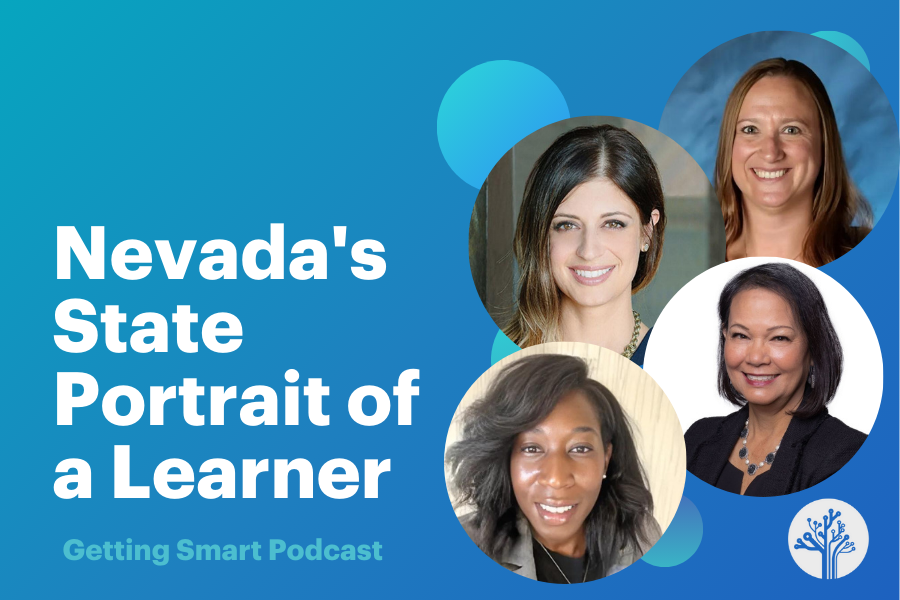
Project Lead the Way is a proven national leader in science, technology, engineering, and math education, for Pre-K through high school. They strive to help teachers make every student in every grade STEM-successful, through interactive, problem-based learning. Learn more and find a school with Project Lead The Way near you.
In this episode of the Getting Smart Podcast, we are joined by an inspiring lineup of educational leaders who are at the forefront of transforming Nevada’s educational landscape. Our guests are Jhone Ebert, Nevada’s Superintendent of Public Instruction, and Jeanine Collins, CEO, Center for the Future of Learning. They discuss their pivotal roles in the creation and implementation of Nevada’s State Portrait of a Learner. Alongside them, Brently Garbutt, Principal of Jerome Mack Middle School, and Claire Romzek, Magnet Coordinator at Lied STEM Academy, share firsthand experiences of how this is already reshaping learning environments and empowering students across the state.
The episode dives deep into the contents of Nevada’s State Portrait of a Learner, exploring how it serves human values and a sense of belonging within educational systems. Through community collaboration and competency-based learning, the initiative shoots to equip students with essential life skills that extend beyond traditional academic knowledge. Our guests discuss the importance of industry partnerships, the integration of design thinking in school projects, and the transformative impact on school culture and student engagement. This episode is evidence of the power of collective vision and action in creating a more inclusive and future-ready educational system.
Outline
- (00:00) Introduction and Welcome
- (00:11) Nevada’s Educational Transformation
- (04:41) Community Collaboration and School Design
- (17:23) Reflections and Future Aspirations
- (23:14) Portrait at LEAD STEM Academy
- (28:10) Portrait at Jerome Mack Middle School
Introduction and Welcome
Victoria Andrews: Hi, you’re listening to the Getting Smart Podcast. I’m Victoria Andrews, and I’m pretty excited about my conversation today. The Nevada Portrait of a Graduate is a powerful tool for mobilizing system leaders to engage and prepare young people for the future through shared human values and a sense of belonging.
Given the rapidly changing world in which youth contend with, the questions and mindsets that are used to structure the portrait are invaluable. Facing a portrait of a graduate on shared human values and a sense of belonging is essential to shaping our youth’s future.
Victoria Andrews: Hi, we’re joined by Jhone Ebert, State Superintendent of Nevada, and Jeanine Collins, the Chief Innovation Officer at Ed Extraordinary. You may remember Jeanine from a set of podcasts we did on Nevada Succeeds a few years ago. I want to welcome Jhone and Jeanine. I’m super excited about the work you all are doing with Nevada and the Portrait of a Learner.
Jeanine Collins: Thanks, Victoria.
Victoria Andrews: I want to ask you if you can just tell me a little bit about why this work is so important right now, and particularly in Nevada.
Jhone Ebert: Thank you, Victoria, for having us today. It’s an amazing day to be here with you and to share this transformative work.
Nevada’s Educational Transformation
Jhone Ebert: You know, when the pandemic hit, we knew as a state that there were many things we needed to improve upon, and it created the opportunity to ask: What’s going well? What’s not going well? And where is our north star? Where do we need to go from here?
In Nevada, we had competency-based learning already on the books. We know, at our core, we want personalized, competency-based learning to transform the system. So, we leaned in right away, gathering the community, higher education, and everyone invested in education to say, “If you could have what you want, what would it be?”
Through all the meetings, convenings, and collaborations, the Nevada Future of Learning Network was formed. We’re very excited about this work. It’s not easy, and it’s not linear, but we’ve signed up for it, and we’re really excited.
Victoria Andrews: It seems like you utilized the opportunity that COVID presented to reflect and push some things already on your agenda to the forefront. It’s really encouraging to hear that your school and local community were already on board. Education is a massive undertaking, and you can’t do it alone. Can you talk about some of the partners you included in your work?
Jhone Ebert: Absolutely. We have Jeanine from Ed Extraordinary, who brings amazing skills to the table. She leads a team of Nevadans—many of whom graduated from our schools and are invested in seeing Nevada’s children succeed.
During the pandemic, having collaboration was critical. We also brought in KnowledgeWorks, who has been working with the state since 2015 on competency-based learning. They provided support to schools and districts, helping them understand what competency-based learning looks like. They also helped pull together policies. We had public-private partnerships, public partnerships, and a lot of synergy around what needed to happen in education. Having local talent who understand our state, combined with national experts, is the right mix to move everything forward.
Victoria Andrews: I’m so glad you highlighted that it takes collaboration with many community partners to make Nevada’s work come to life. Jeanine, can you share a little bit about the work that you and the Ed Extraordinary team brought to this space? I know Jhone mentioned that your team consists of Nevadans, which makes a huge difference in connecting with the community and having a vision for it.
Community Collaboration and School Design
Jeanine Collins: Absolutely. I have the privilege of leading an incredible, small, agile group of Nevadans who have experience as educators and artists. The artistry on our team challenges us to think about the lenses we use to see the work and how we embody multiple perspectives. We communicate and weave together the perspectives we hear from our team and the community into our convenings and conversations.
We were thrilled to help build the portrait of a learner with the community, alongside the department. It was a year-long process that engaged community voices. We conducted one-on-one interviews with business leaders, focus groups, virtual convenings, physical conversations, and surveys. What quickly became clear was the alignment around what mattered to our community—living a good life and thriving collectively. Skills that are often unspoken in school were being highlighted, and the community was excited about the alignment we were finding.
Jhone Ebert: To add to what Jeanine said, we focus on workforce readiness—ensuring students are prepared for life after PK-12, whether joining the workforce, pursuing higher education, or entering the military. The portrait prioritizes the development of skills, alongside academic knowledge, that the workforce is asking for, which better prepares our students for all the complexities they’ll face, no matter the path they choose after education.
Victoria Andrews: And I’m glad you highlighted that, Jhone, because the skills the portrait highlights aren’t just for workforce readiness—they’re for students to be creative, productive citizens, whether they stay in Nevada or move elsewhere. I love that the exposure to these skills starts early in elementary school, and you’ve mobilized school design teams to pilot projects exposing students to these skills. Jeanine, can you share a little about the creation of these school design teams and some of their projects?
Jeanine Collins: Absolutely. One thing that excites me is how community feedback has shaped our work at every stage. Early on, we heard from Nevadans saying, “We talk a lot about education, but what are we doing?” We felt a mandate to build quickly and embrace the mindsets of design thinking—building to learn, not talking and waiting to build.
The school design teams were born from the recognition that we needed educators involved in making sense of the data, shaping the portrait, and figuring out what was possible. Thirteen teams across the state came together, looked at their own learning communities, and started operationalizing the values from the portrait. They also published case studies about their work. This approach helped launch a larger, broader school design team initiative as part of the Nevada Future of Learning Network.
We’ve been intentional about learning in public, modeling different ways to integrate the competencies developed in the portrait into various contexts. This work is about rethinking learning relationships, experiences, and environments to make them relevant. Joy plays a big part because people want joy in learning, and that creates space for relevance, engagement, and a healthier system.
Victoria Andrews: I mean, you already know at Getting Smart, we’re pro-joy, pro-possibility, and pro-learning out loud! There’s a sense of vulnerability there, and it’s crazy that we’re now in a learning environment where people are afraid to make mistakes. Mistakes are one of the best teachers, and having that opportunity to learn out loud in front of others, in a space that allows for agility—that’s so powerful.
I just applaud Jhone, Jeanine, and everyone who worked alongside them—the educators, the young people who put their failures on display, who put their learning on display, and were responsive to the changes needed as the portrait continued to come to life. I can’t rave enough about watching a state tackle a portrait in this manner, bringing so many partners alongside—those in higher education, young people, educators, and the community—soliciting all their feedback so that it wasn’t just a couple of people in a room at one time. It was everybody’s true voice, ensuring a higher level of buy-in and support to impact students all over the state.
Reflections and Future Aspirations
Victoria Andrews: Jhone, because you’ve been here as the portrait has continued to grow and come to life, what is your biggest dream for the portrait?
Jhone Ebert: I am so excited about the portrait and the work we’ve completed. My biggest dream is that it has sustainability. There are a couple of components to that. First, that it sustains beyond any one person because Nevadans came together to create it—from students to our business community, higher education, and all other collaborators. This was not by chance; we were very strategic to ensure it wasn’t a top-down initiative.
By doing that, we’re building an education system that will continue well beyond any of us. It’s an education system that uplifts our young people, prepares them for their future, and ensures they’re happy and joyous while doing all this work. I want them to understand how they can be successful and thrive in the future they dream of.
Victoria Andrews: That’s wonderful. Jeanine, do you want to share any of your dreams for the portrait?
Jeanine Collins: I think Jhone said it really well. My dream is that the portrait continues to bring joy and inspiration to the community, empowering people to shape it. The more joy and inspiration there is, the more sustainable it will be. It’s been such a joyful process to see people come together to make things better for our community. That’s what it’s all about.
Victoria Andrews: Thank you both for sharing that. I love hearing about people’s dreams and the grandest possibilities for things. What’s in front of us isn’t what can be—it’s our imagination and what we can see beyond the current moment. Hearing your dreams and aspirations for current and future Nevadans, both young and old, in various systems, brings a huge smile to my face.
I’m super excited to continue hearing about the work going on in Nevada and the leaders involved in this effort. We’ll have the opportunity to check in with some of the members who participated in school design teams and hear about their various projects and how they’re supporting the work of Nevada’s Portrait of a Learner.
This Portrait of a Learner is also unique in that it’s a statewide effort, providing autonomy to educators and campuses, while also giving students the skills needed for life beyond the classroom. To see a state embrace the skills that will shape and transform the lives of so many youth is very powerful.
Today, I’m joined by two amazing leaders: Brently Garbutt, Principal of Jerome Mack Middle School, and Claire Romzek, the Magnet Coordinator at LEAD STEM Academy. Both campuses are located in the Clark County School District in Las Vegas, Nevada. Claire and Brently, how are you both doing today?
Claire Romzek: Great!
Victoria Andrews: I’m so happy to have you both. I recently visited Las Vegas to tour your campuses and see the Portrait of a Learner come to life, so this conversation has been on my mind for a few weeks. Claire, you’ve been a portrait ambassador for the last two years. Can you share a little bit about what that role means and how you live it out?
Claire Romzek: Yes! I joined the competency fellows when they first started, and we were grouped into different pathways to work on graduate competencies. We spent a lot of time figuring out what the portrait draft meant, how it related to the classroom, and what we wanted our learners to know when they graduated. After a lot of wordsmithing and research, we developed the graduate competencies. Then, we started building what those competencies would look like from Pre-K all the way through to graduation.
Victoria Andrews: So, you did that as part of your role as a competency champion, correct?
Claire Romzek: Yes.
Victoria Andrews: And those meetings and sessions contributed to the questions that are foundational to Nevada’s Portrait of a Graduate, right?
Claire Romzek: Yes. Before we got into the work, the draft was already circulating around the state. The four driving questions of the portrait were in draft form when we started, but we continued thinking through them, giving feedback, and shaping the final version. Once the draft became official last spring, we really hit the ground running, perfecting our competencies.
Victoria Andrews: I appreciate that the questions are driving forces behind the portrait. They aren’t prescriptive but allow freedom and flexibility so the portrait can look and feel different depending on the community. How does that translate into the work you do as an ambassador?
Claire Romzek: As an ambassador, my role is to get the word out. For example, I was on a field trip the other day, and I asked someone, “Have you heard about the Portrait of a Nevada Learner?” It’s about spreading awareness and also knowing what’s happening in other communities. I’m a competency fellow and an ambassador, so I can bring that work to our ambassadors and let them know what we’re doing next—like teacher toolkits, which are already in the works.
Victoria Andrews: I appreciate that it’s not just adults who are ambassadors. Nevada has also mobilized student ambassadors, so the portrait isn’t being built for students, but with students, who are knowledgeable and can share it with others.
Claire Romzek: Yes, there’s a youth advocate pathway in this work.
Victoria Andrews: That’s something other states can learn from—bringing youth into the process so they understand and help shape the portrait as it grows. It’s not just something they hear about once or see on a bulletin board.
Claire Romzek: Right, and they have a voice in what they want out of life and what they think school should look like. That’s a powerful piece of the puzzle.\
Portrait at LEAD STEM Academy
Victoria Andrews: And Claire, you’re at LEAD STEM Academy. Can you talk a bit about how the portrait work has impacted instructional practices at your school?
Claire Romzek: Yes! We’re a school design team, so last year we volunteered to pilot the portrait work. It was still in draft form at the time, but we started parallel work at our school, thinking about how we could make the portrait our own while staying aligned with the state’s vision.
We faced a challenge at our school: not every teacher identified as a STEM teacher. We’re a STEM academy, but if you were a foreign language or ELA teacher, you might think, “I’m not really a STEM teacher.” So, we reframed STEM by focusing on the skills rather than the subject areas. We defined STEM as: S—Solving Problems, T—Trial and Error, E—Effective Communication, and M—Mental Perseverance. No matter what content you’re teaching, you’re teaching these skills.
We created posters highlighting what teachers were already doing in their classrooms and connected those actions to one or more of the four STEM components. This reframing was meant to change learner attitudes and emphasize the skills they’re building.
Victoria Andrews: I saw this in action when I visited your campus. You had bingo cards for students, and when they demonstrated one of the skills—like solving problems or communicating effectively—they got a stamp on their bingo card. Once they filled out their card, they were entered into a raffle and received a prize, right?
Claire Romzek: Yes! Students earn five-star points just for turning in their bingo cards. They can accumulate points and exchange them for prizes. Teachers might say, “Today, I’m looking for effective communication,” or students can take initiative and say, “I just mentally persevered.” They get a stamp when they show their work.
Victoria Andrews: I loved seeing that in action. Students were engaged and could articulate how they had earned their stamps, like, “I did this in ELA, and this is what I learned.” That’s what you want—students embracing these skills, and the whole campus embracing the process. When I visited, it was Shark Tank time, and I could see students collaborating and communicating. Your campus has fully embraced the portrait, and it was wonderful to witness. Thank you for allowing us to experience it firsthand.
Portrait at Jerome Mack Middle School
Victoria Andrews: So Brently, you’re the principal at Jerome Mack Middle School. In your role, can you share a little bit about how you and your team have embraced the Portrait of a Learner, and even your personal journey with the portrait?
Brently Garbutt: When my conversations with Jeanine began a couple of years ago, and she first introduced the portrait, I wasn’t fully sold. I was very much on the traditional path, focused on tests and academic outcomes. I thought back to my own educational journey and what led me to where I am. But through those conversations, the portrait work allowed me to see a much bigger role for education beyond just preparing students for the next academic step or their future careers. It made me realize that our work is about instilling identity in our kids—giving them a sense of value, pride, and ownership.
This year, we’ve really leaned into that idea of identity, holding ourselves and our students accountable for being “Mavericks,” which is our school mascot. We’ve embraced what it means to be a Maverick and are using it as a foundation to give our students a sense of belonging and purpose that hasn’t traditionally been here. It’s been transformative.
Victoria Andrews: I got to witness some of your morning messages where you talk about what it means to be a Maverick and the importance of accountability. I loved how you introduced the concept of a “responsible or accountable adult” on campus. I saw a student come up to you during lunch, excited to share how she was going to make better choices. She was holding herself accountable and was eager to share her goals with you. It’s clear that you’re driving cultural change at Mack Middle. Can you talk more about how the portrait has influenced that shift?
Brently Garbutt: Absolutely. Two words we emphasize a lot are accountability and responsibility—not just for the adults but for the kids as well. We want them to own their education and define success for themselves. One metric that really stands out for us this year is our chronic absenteeism rate. Thanks to the portrait work, our Maverick values, and our Positive Behavioral Interventions and Supports (PBIS) system, which we call Minga, we’ve seen a double-digit improvement in attendance compared to last year.
It’s not just about the test scores, but we’ve also seen a shift in how students approach testing. They come up to us, excited to share how much they’ve grown, saying things like, “Guess what I got on my MAP test?” It’s great to see them be proud of their accomplishments because they know they put in the work. That level of ownership is new this year, and it’s a huge cultural shift for our campus.
Victoria Andrews: While it’s not just about academics, it’s so powerful that students are starting to connect their personal growth to their sense of accomplishment. That’s one of the skills embedded in the Portrait of a Graduate—the ability to reflect on their progress and take pride in it. I could feel the joy on your campus when I visited. There’s a physical transformation happening in your school, but the internal transformation you and your staff are fostering is even more impactful. I want to highlight that the joy and pride you’re building within your students are just as important as academic achievements.
Brently Garbutt: Thank you for that.
Victoria Andrews: We know that in education, initiatives come and go, and leaders often see trends come and go as well. Brently, can you talk a little bit about your initial reactions to the Portrait of a Learner work and how your perspective evolved over time?
Brently Garbutt: Like I mentioned, at first, I wasn’t completely sold. But Jeanine has this way of framing it as an “and”, not a “but”—meaning you don’t have to choose between academic success or social-emotional learning; you can have both. That really resonated with me, not just in my professional life but in my personal life as well. It’s helped me embrace the idea that there’s room for everything, and everything has its place.
I honestly don’t think I would have been as successful in my first year as principal without being part of this work. The portrait has given me a vision for what we need to do for our students, and it’s helped me get out of their way so they can experience the joy of learning. I feel that joy myself every day when I come to work, and it’s because of this work that I’m able to share that with my students.
Victoria Andrews: Oh my goodness, thank you so much for sharing that, Brently. Hearing how the portrait has shifted your perspective and helped you create a sense of identity and joy at your school is truly inspiring. Claire and Brently, I just want to say how much I appreciate the insights you’ve shared as instructional leaders. Your roles as ambassadors, competency champions, and campus leaders have been instrumental in moving the Portrait of a Learner work forward.
I hope that what we’ve shared today is helpful for other states and districts that are embarking on their own journey of building a Portrait of a Graduate. If anyone has additional questions, feel free to reach out. Both Claire and Brently are invaluable resources and have a spirit of service and connectedness that make them great ambassadors for this work.
Thank you for joining us, and I hope you all have a great day!
Jhone Ebert
Jhone Ebert is Superintendent of Public Instruction for Nevada, where she works tirelessly on behalf of Nevada’s nearly 500,000 students and its 750 schools. In January 2023, she was Reappointed by Governor Joe Lombardo.
An equity champion, Ms. Ebert has rooted her career in the belief that the work is unfinished until every single child has what is needed to thrive in school and life. As State Superintendent, one of her proudest accomplishments is the successful shift in Nevada’s 54-year-old funding formula to the Pupil Centered Funding Plan, a formula that allocates resources in a more equitable, student-centered way. The new formula is getting a $2 billion dollar boost from Governor Lombardo’s executive budget proposal. Superintendent Ebert has also spearheaded effective educator retention and recruitment efforts to build out Nevada’s teacher pipeline. This effort included investing more than $20 million dollars to Incentivize Pathways to Teaching. Under her leadership, the Nevada Department of Education has expanded Career and Technical Education opportunities to ensure Nevada students are future-ready. The program has seen a 32 percent increase in student enrollment in the completer level course, thus helping to ensure more students are eligible for the College and Career Readiness Diploma. Thanks to Superintendent Ebert’s guidance, Nevada has proven itself to be a leader in computer science education. More than 95 percent of Nevada high school students attend a school that offers foundational computer science.
Ms. Ebert is a life-long learner. Her 30-year career has been fueled by her belief in the power of public education to change lives. Her honors include the UNLV College of Education Alumna of the Year, the International Society for Technology in Education’s 2020 Annual Impact Award, the National School Boards Association’s Technology Leadership Network 20 to Watch, the CCSD Excellence in Education Hall of Fame Award, and the Presidential Award for Excellence in Mathematics Teaching.
Ms. Ebert received her Master of Education in Instructional and Curricular Studies from the University of Nevada, Las Vegas, and her Bachelor of Arts in Mathematics from California State University Fresno.
Jeanine Collins
Jeanine is the CEO of Center for the Future of Learning. Previously, she served as the Chief Innovation Officer at ed.Xtraordinary, an education innovation unit inside Teach for America Nevada that works with educators, youth, and community to reinvent learning and Executive Director for Nevada Succeeds, a Nevada-based education policy nonprofit. She has been a public high school performing arts educator, Critical Friends Group Coach, university instructor, and learning design consultant. Her most transformative role continues to be mom to Michael and Julia.
Brently Garbutt
Brently Garbutt is the Principal of Jerome Mack Middle School located in Clarke County School District in Las Vegas Nevada.
Claire Romzek
Claire Romzek, has taught in the Clark County School District in Southern Nevada for her entire career. After years of teaching 5th Grade, the opening of Lied STEM Academy Magnet School, inspired her to move to Middle School. Claire taught 4 years at Lied STEM Academy, where in 2022 she was recognized as Magnet Schools of America Teacher of the year for Region II. She is now in the Magnet Coordinator position. Claire is passionate about Project-based learning and Proficiency-based grading. As a mother of three, her children’s experiences in school drive her vision for change.
Links
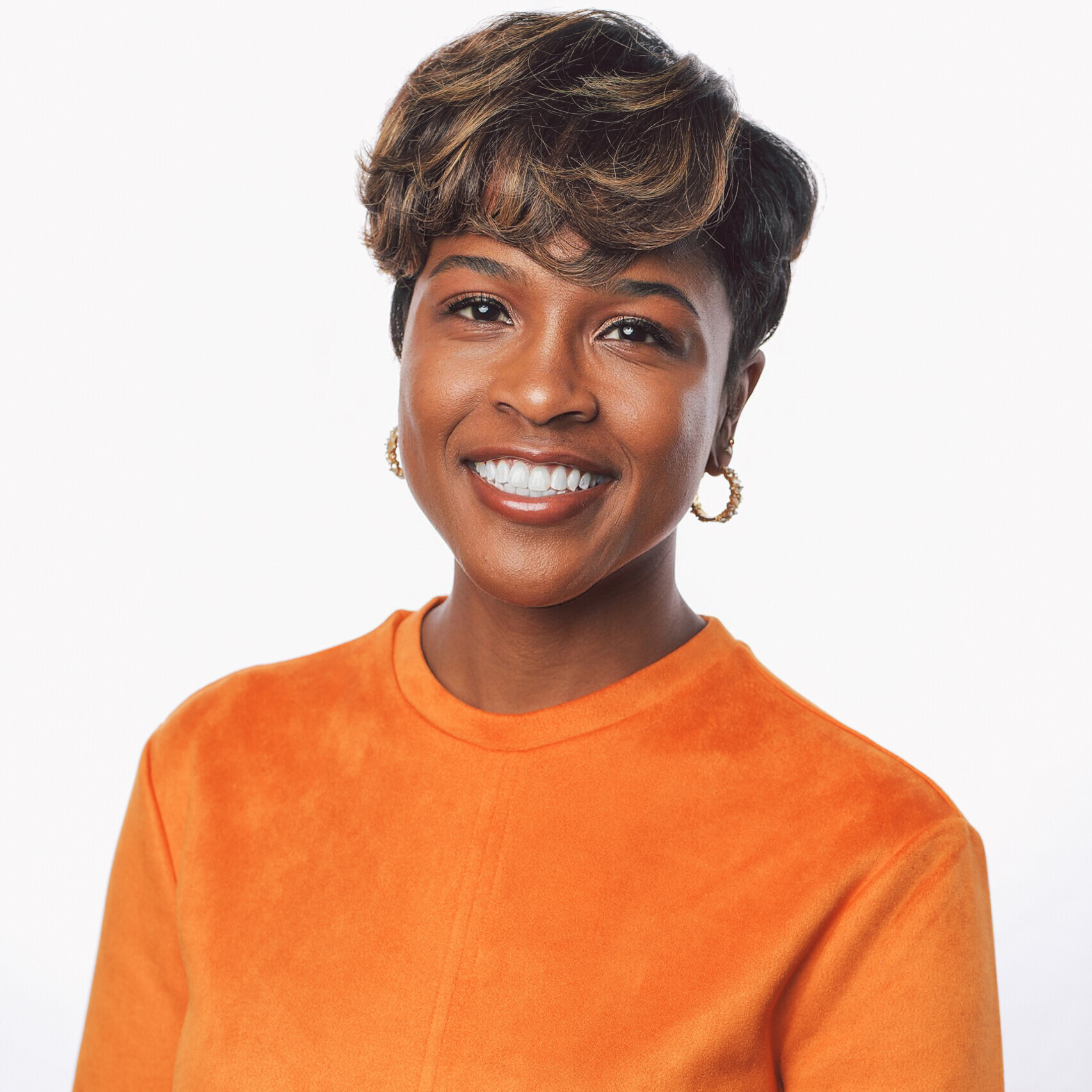




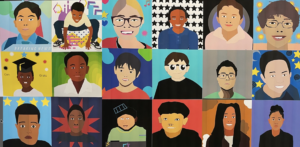
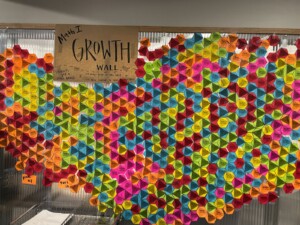
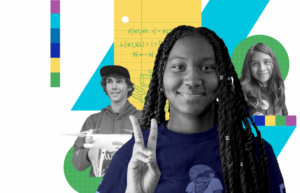
0 Comments
Leave a Comment
Your email address will not be published. All fields are required.